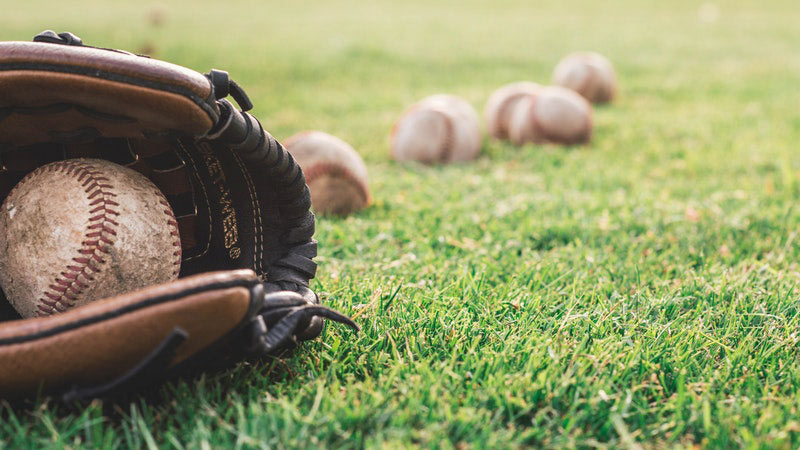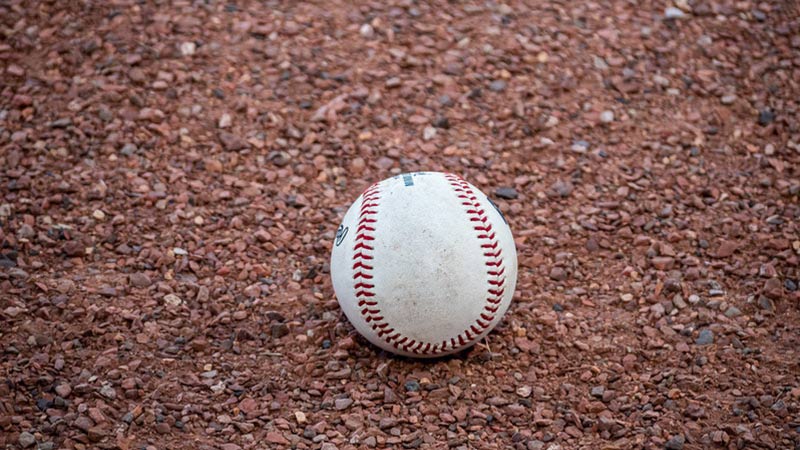As baseball enthusiasts, we understand the importance of honing our skills to gain an edge over opponents. One technique that has gained attention over the years is scuffing a baseball.
In this blog post, we will delve into the art of scuffing a baseball, discussing its definition, legality, and the step-by-step process of successfully scuffing a ball.
By the end, you’ll have a comprehensive understanding of this technique and be well-equipped to incorporate it into your pitching repertoire.
What Is Scuffing in Baseball?
In the world of baseball, scuffing refers to the intentional act of altering the surface of a baseball. This alteration typically involves scratching, roughening, or creating abrasions on the ball’s outer covering.
The purpose behind scuffing a baseball is to influence its flight characteristics and create unpredictable movement when thrown.
By strategically scuffing the ball, pitchers can manipulate its aerodynamics, making it more challenging for batters to track and hit accurately. When a ball is scuffed, it can deviate from its usual trajectory, leading to unexpected breaks, dips, or sharp movements.
This unpredictability can give pitchers a significant advantage, as it becomes more difficult for batters to make solid contact with the ball.
Scuffing a baseball can be achieved through various means. Pitchers may use sandpaper, an emery board, or other abrasive materials to roughen specific areas of the ball.
By focusing on the seams or targeted spots, pitchers can create irregularities on the ball’s surface that interact with the air differently when thrown.
It is important to note that scuffing a baseball requires skill and precision. Pitchers must understand how different scuffing techniques and locations on the ball can affect its flight.
They need to experiment with different scuffing patterns and observe how the ball behaves during practice sessions to develop a deeper understanding of its altered flight characteristics.
While scuffing a baseball is primarily associated with pitchers seeking an advantage, some argue that it adds an extra layer of strategy to the game.
It tests the abilities of both pitchers and batters to adapt and adjust to the unpredictable movement of a scuffed ball.
However, it is essential to consider the rules and regulations of the league or organization in which the game is played, as scuffing a baseball is not always allowed and may be considered illegal in certain contexts.
Is It Legal to Scuff a Baseball?
Scuffing the surface of a baseball with sandpaper, an emery board, or any rough material can result in what is known as an “emery ball.” When a ball is scuffed to the point of being an emery ball, it is considered to be in an unplayable condition and will not count as a legitimate strike during gameplay.
It is essential to note that even if you do not apply any pressure to the ball while throwing it if it is a rotten emery ball deliberately tampered with to disrupt its bounce, it will still be classified as an illegal pitch.
The term “rotten emeries” refers to balls that have been intentionally altered to impede their correct bouncing, providing unfair advantages to the opposing team.
Umpires closely monitor for such tampering during games, and the use of rotten emery balls can lead to severe consequences, potentially resulting in a ban from playing baseball altogether.
The severity of the punishment may vary, but it could include losing eligibility for future tournaments or even having one’s amateur status revoked entirely.
It is crucial for players to understand that altering the surface of a baseball in any way beyond making contact with the pitched object is strictly against league regulations.
This rule applies not only to emery balls but also to other forms of surface manipulation, such as using mud on the outside of a softball.
Violating these regulations can result in penalties, emphasizing the importance of abiding by the rules and maintaining fair play in the game of baseball.
How to Scuff a Baseball Successfully?

If you want to learn how to scuff a baseball successfully, we can help. Here are some easy steps you can follow to learn and practice it.
Step 1: Scuff the Ball
To scuff a baseball, you’ll need to create intentional abrasions on its surface. One effective method is to use sandpaper or an emery board to roughen the seams or specific areas of the ball. By strategically scuffing the ball, you can control the direction and intensity of its movement during a pitch.
Step 2: Mark the Ball
After scuffing the ball, marking it with a unique pattern or symbol can help you identify your altered pitches and maintain consistency. Use a ballpoint pen or other marking tool to apply your chosen mark on the scuffed areas.
Step 3: Force the Pitch
Scuffing a baseball alone is not enough to improve your pitching. You must learn how to utilize the altered ball effectively. Experiment with different grips, release points, and arm angles to master the pitches that best suit your playing style. Practice is key to understanding how the scuffed ball behaves and refining your technique.
Step 4: Select the Right Pitcher
Scuffing a baseball may not be suitable for every pitcher. Some pitchers naturally excel at generating movement and control without altering the ball’s surface. Assess your strengths and weaknesses as a pitcher and determine if scuffing aligns with your playing style and goals.
Step 5: Play Defense
While scuffing a baseball may provide you with an advantage on the mound, it is essential to remember that defense plays a significant role in winning games. Work on your fielding skills, positioning, and understanding of the game to complement your pitching abilities.
Some Essential Facts About Scuffing Baseball
Scuffing baseball has a rich history and has evolved over time with players continually experimenting with different techniques and tools to gain an advantage on the mound. Here are some essential facts about scuffing baseballs that every player and fan should know:
Historical Significance
Scuffing baseballs has been a part of the game for many decades. Pitchers like Gaylord Perry and Phil Niekro became notorious for their mastery of scuffed pitches, using substances like saliva or emery boards to alter the ball’s surface.
Pitch Variation
Scuffing a baseball can lead to a wide range of pitch variations. By manipulating the ball’s surface, pitchers can generate movements such as cutters, sinkers, or sliders. These altered pitches can be highly effective in fooling batters and inducing weak contact.
Aerodynamic Changes
Scuffing a baseball affects its aerodynamics, altering the airflow around the ball as it travels through the air. This disruption in airflow creates turbulence, resulting in unpredictable movement and making it more challenging for batters to make solid contact.
Control and Command
Scuffing a baseball not only changes its movement but also affects a pitcher’s control and command. It requires skill and practice to harness the altered flight characteristics and consistently throw accurate pitches.
Ethical Considerations
The use of scuffed baseballs raises ethical considerations within the game. Some argue that it provides pitchers with an unfair advantage, while others see it as part of the strategic nature of the sport. The ongoing debate regarding scuffing reflects differing opinions on the boundaries of acceptable gamesmanship.
Detection by Umpires
Umpires are vigilant in detecting scuffed baseballs. They closely examine the ball’s appearance, texture, and movement during the game. Suspicion may arise if the ball exhibits irregular movement patterns, sudden changes in velocity, or visible marks that suggest tampering.
Penalties for Illegal Scuffing
The use of illegal scuffed baseballs can result in severe penalties. Pitchers caught scuffing the ball may face ejections, suspensions, fines, or reputational damage. Leagues and organizations have strict rules and regulations in place to discourage the use of altered baseballs.
Understanding these essential facts about scuffing baseballs provides a deeper appreciation for the technique and its impact on the game.
Whether you view it as an innovative strategy or a controversial tactic, scuffing remains an intriguing aspect of the sport that showcases the creativity and skill of pitchers seeking a competitive edge.
FAQs
Can scuffing a baseball really make a significant difference in a pitcher’s performance?
Scuffing a baseball can alter its flight characteristics and provide pitchers with an advantage by inducing movement that is harder for batters to track. However, the degree of improvement varies depending on the pitcher’s skill and ability to utilize the altered ball effectively.
Are there any legal alternatives to scuffing a baseball?
Yes, there are legal alternatives to scuffing a baseball. Pitchers can employ different grips, arm angles, and pitch types to generate movement without altering the ball’s surface. Developing a wide range of pitches and mastering their execution is crucial for success on the mound.
Will scuffing a baseball increase the risk of injuries?
Scuffing a baseball itself does not pose a direct risk of injury. However, altering the ball’s flight characteristics may affect the batter’s ability to make solid contact, potentially leading to more unpredictable outcomes. As with any pitch, pitchers should prioritize accuracy and control to minimize the risk of unintentional harm.
Can scuffing a baseball be detected by umpires or opposing teams?
Umpires and opposing teams are trained to detect scuffed baseballs. Suspicion can arise from unusual movement patterns, erratic pitches, or visible marks on the ball. If caught scuffing, severe penalties can be imposed, ranging from ejections and suspensions to reputational damage.
Should young or amateur pitchers attempt to scuff a baseball?
It is crucial for young or amateur pitchers to focus on developing fundamental skills before considering scuffing a baseball. Mastering proper pitching mechanics, building arm strength, and understanding pitch selection are essential for their long-term growth. Scuffing should only be explored once a solid foundation is established.
Bottom Line
Scuffing a baseball is a technique that can provide pitchers with an advantage by altering the ball’s flight characteristics. While its legality and ethical considerations remain points of debate, understanding the process and implications of scuffing can expand your knowledge of the game.
Remember, scuffing a baseball should be approached with caution and within the boundaries of your league’s regulations. Ultimately, refining your pitching skills and developing a diverse repertoire of pitches is key to success on the mound.
Have a nice day.







